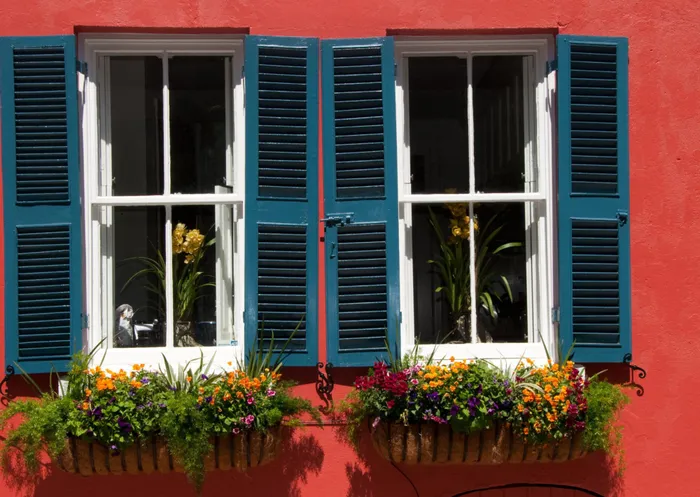Ventilation is the cure for condensation

Before painting, test the timber with a sharp pointed blade to check if it is still solid " if it is showing signs of rot, either replace the affected section or the whole window. Before painting, test the timber with a sharp pointed blade to check if it is still solid " if it is showing signs of rot, either replace the affected section or the whole window.
Cape Town - Some answers to DIY questions:
Emile writes: “On a low pitch roof (probably 5º) I am getting severe condensation – mainly at the high parapet end, causing water to run down the inside wall and drip on to (and through) the plasterboard ceiling. It does this with both galvanised iron and “asbestos” roofs. The cavity between the roof and ceiling has ample insulation, and the lower ends (at the gutters) are well sealed. I have checked that this is not a rainwater leak – it only happens when it isn’t raining. Why does the condensation accumulate at the highest part of the roof?”
Answer: The fact that you have no leaks when it rains proves that the roof is indeed well sealed and watertight; you also mention that the roof void is well insulated.
My guess is that this is a case of basic physics. Hot air rises, the air in your ceiling void warms up, and the hot air rises to the highest part of the void, at the parapet end. The air is unable to escape because the void is so well sealed, and as it cools down it begins to condense and drips down the wall.
The cure is to get ventilation into the roof void. Either cut through the parapet wall and insert air-bricks at the level of the void, obviously the higher the better, or install a whirly-bird or similar extraction system. The lower the pitch, the worse the problem, as the design of the sheeting on the lower pitches is such that apart from keeping the water out, it keeps the warm air in. Just one of a number of reasons I would not buy a property with a flat roof.
Veronica asks: “I have many white painted mock-sash wooden frames and wooden ‘happy’ doors which require constant attention.
“At this time of the year condensation collects on the glass. Whenever time permits I dry the interior windows in the mornings. When it rains heavily, water collects on the inside wooden panels of certain windows and doors and if neglected, black damp patches appear.”
Answer: The answer is similar to that I gave Emile. The interior of the room is warmer, thus when the warm air hits the cold window it condenses. Again, the best cure is air flow and ventilation. Rather sleep under four blankets with a small window open, as against one blanket, heater on and no windows open.
The water seepage from the exterior to the interior will happen for one of two reasons: either the wood itself is rotting, or the putty is old and dry and water is seeping through the cracks.
A heavy exterior paint will hide or cover many problems, but it is only camouflage. Before painting, test the timber with a sharp pointed blade to check if it is still solid – if it is showing signs of rot, either replace the affected section or the whole window.
Well-maintained wood will not rot easily, so 90 percent of the leakage problems are caused by inferior sealing between the glass and the frame. My knowledge of putty and puttying is not good, but if it is applied too dry or too wet you are looking for trouble. The Rolls-Royce method is to use timber glazing beads rather than putty, with the glass being embedded in a bead of silicone.
Jock has two problems: “My black driveway gate gets a white powder on only the south side of the gate. The north side stays black. I undercoated it with a Duram product and then top coated with enamel paint and three weeks later this white powder appears. After all the hard work in painting the gate, it is a bit disheartening.
“I have decorative plaster of paris cornices throughout my house. Every other month one falls down or a crack appears between the ceiling and the cornice and then pulls the paint away from the ceiling. Putting them back up is a very messy job and then you have to repaint the wall. If I screw the cornice to the ceiling do you think it could solve the problem?”
Answer: There is no straightforward answer to the first question, as different metals react differently to different applications. Obviously the south side of the gate receives less sunlight and thus will always be “damper” than the north side. The moisture will react with different types of paint or metal allowing oxidisation to occur, leaving white residues.
My advice is to strip it right down to bare metal and start again. If you can put up with the look of it, once the paint is off, leave the bare surface to weather naturally for at least six months before repainting. Whether you leave it to stand or not, the surface should be degreased with the appropriate solvent, treated with a rust neutraliser, followed by a primer coat, universal undercoat and then two finishing coats. Many contractors are reporting great results by using a roof paint for the finishing coats.
Ceiling cornices drop or sag because they were not fixed with sufficient cretestone initially or the ceiling is moving excessively. I quite agree with your idea of screwing through the cornice into the ceiling. It then becomes well supported and can follow any movement of the ceiling. Seal the joints between the cornice and wall or ceiling with a good quality flexible sealant before repainting. - Weekend Argus